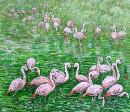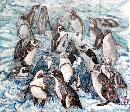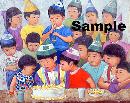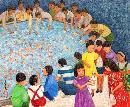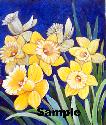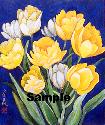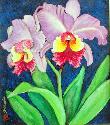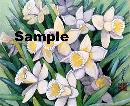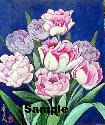
Learn foreign languages while watching your favorite YouTube videos!
The Language learning app is a handy set of tools that will help you improve your language skills by accessing subtitles, a built-in dictionary, and saving words and phrases you want to learn to revise.
Learning foreign languages will be an interesting and exciting experience for you!
Artist's Statement
I want my art to for the eyes what fusion cooking does for the taste buds. Fusion cooking-whether specifically French and Thai at Jean-Georges Vongerichten's Vong or more generically East-West at Ming Tsai's Blue Ginger--has exploded in popularity in the last two decades. Over the same period of time, I have been experimenting with visually fusing the best of traditional Chinese and Western aesthetics.
For me, it started with the midnight training sessions. My father Kuo Hsueh-Hu, a famous painter to his home country of Taiwan, wanted to pass his artistic legacy onto his children. Being a traditionalist, he especially encouraged my three sisters and me to nurture our artistic talents, as he felt an artist's career was more compatible with raising families of our own. And so we practiced, sometimes for hours each day. I have especially vivid memories of these night blooming cactus plants he kept in the house. They would reach full bloom only a few nights ,out of the year-and only around midnight. He would make us stay up late to paint the flowers in full bloom. I would sleepily try to concentrate in the dim light, struggling to capture what I saw cash blossom, each petal, each leaf--as best as I could. In retrospect, I think there are only two possible reactions to this kind of strange discipline: a strong passion or an equally strong aversion to the arts. My reaction was love.
To this day, I point every day I am at home and miss it when I'm on the road. Of my three sisters, I'm the only one that still paints every day (though one of them comes close by being a full time professor of art). I bring my traditional Chinese training in the visual arts and mix it with the best of what I've seen and learned from the west, where I have lived for welt over twenty years. I still travel quite a bit through both America and Asia, and it's gratifying on a personal level, to see the same appetite for cultural fusion on both continents. The result: Americans reaching out to the visual and culinary traditions of Asia (who would have thought that pho would become as popular as it has?), and Asians embracing the Western legacy (just walk into any modem art gallery in the streets of Hongkong or Taipei or Tokyo or Bangkok). And just as Asian fusion food takes the best of what each culture loves to eat and lovingly brings those tastes together, I hope my paintings do the same: namely, bring together the best of how each culture sees the world.
Biography: Artist Biography
Komi Chen's unique visual style blends Western realism with a modern Chinese sensibility. As a woman who has spent time in both the East and West, it seems natural that her works would reflect the visual styles of both traditions.
Komi was born in Taipei, Taiwan into an artistic family. Her father, Kuo Hsueh-Hu, is one of the country's premier visual artists and considered one of its national treasures. Her father trained her on the fundamentals of classical Chinese painting and calligraphy.
Komi then attended the College of Fine & Applied Arts at the nation's prestigious training ground for teachers, the Taiwan National Normal University (http://www.ntnu.edu.tw/; English site at http://www.ntnu.edu.tw/english/Econtent.html). There she mastered traditional Chinese fine arts techniques and got her first exposure to Western styles. Soon after graduation, Komi began teaching fine arts at a local middle school.
She moved to Pittsburgh, Pennsylvania in the late 1960s to pursue an advanced degree in Library Science, but she never lost her passion for art. She began teaching people in local community colleges traditional Chinese painting techniques. At the same time, she began to absorb the visual styles of her adopted homeland, especially Western realism. Komi got actively involved in the local arts community and exhibited at many regional art shows including the annual Three Rivers Arts Festival.
Komi's paintings during her early years in the United States tended towards the traditional mountain-and-water landscapes and still-lifes of flowers and fruit. As she gained more confidence in her own visual style, however, she added more colorful and dramatic works that reflect a passion for native cultures and landscapes from around the world: from serene Japanese temples to bustling ostrich farms in South Africa, from sparkling Canadian glaciers to colorful religious ceremonies at Buddhist temples in Thailand. Her paintings are prized by private collections throughout the United States and around the world.
Today, Komi works with a rare combination of media. She paints on silk using a special paint the artist prepares herself by carefully heating a combination of glue and gouache. The resulting painting is not only sparkling and vibrant, but it will last generations without any fading whatsoever.
Country: United States
E-mail: komi.s.chen@gmail.com
Site: The Art Of Komi Chen


